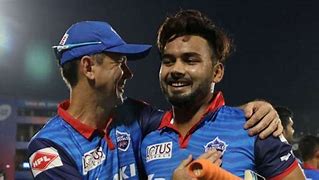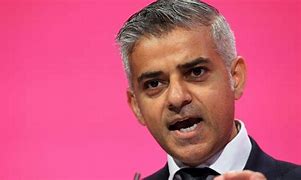Feature
‘IPL COO Sundar Raman resigns’

Mumbai: Sundar Raman, under investigation for alleged wrongdoing in the 2013 Indian Premier League (IPL) match fixing and betting scandal, has resigned as the tournament’s Chief Operating Officer (COO), media reports said on Tuesday.
Raman was one of those named in the Lodha Committee report on the IPL scam, which questioned his role in the scandal. He was at the helm of IPL affairs when the scandal broke out. He took his position in the league’s inaugural season in 2008.
BCCI president Shashank Manohar has accepted his resignation, espncricinfo reported on Tuesday. Several other TV channels and media outlets also confirmed the development.
Raman is believed to have met Manohar in Nagpur on Monday and submitted his resignation. The development comes after the BCCI chief had earlier criticised the board’s decision to retain Raman as its COO despite being under the scanner.
Raman will formally leave the high-profile position on November 5.
The Supreme Court-appointed Justice Lodha Committee has earlier suspended franchises Chennai Super Kings (CSK) and Rajasthan Royals from IPL for two years by the in the spot fixing and betting scandal that rocked the cash-rich Twenty20 tournament in 2013.
The committee also said the fate of Raman was to be ascertained later as the investigation against him is ongoing.
Raman had told the committee that Gurunath Meiyappan, son-in-law of then Board chief N. Srinivasan was not CSK official. But his contention was rejected in the report filed by the committee.
Apart from Meiyappan, the committee also recommended the suspension of Royals co-owner Raj Kundra, both of whom were found guilty of betting, for life from any cricketing activity undertaken by BCCI. The guilty duo were also suspended from any cricket related activity for a maximum period of five years.
Raman is now scheduled to meet the Lodha committee on November 15.
The BCCI’s Annual General Meeting (AGM) will take place on November 8 in Mumbai.
Entertainment
Meghalaya Reserves Legalized Gambling and Sports Betting for Tourists

The State Scores Extra High on Gaming-Friendly Industry Index
Meghalaya scored 92.85 out of 100 possible points in a Gaming Industry Index and proved to be India’s most gaming-friendly state following its recent profound legislation changes over the field allowing land-based and online gaming, including games of chance, under a licensing regime.
The index by the UK India Business Council (UKIBC) uses a scale of 0 to 100 to measure the level of legalisation on gambling and betting achieved by a state based on the scores over a set of seven different games – lottery, horse racing, betting on sports, poker, rummy, casino and fantasy sports
Starting from February last year, Meghalaya became the third state in India’s northeast to legalise gambling and betting after Sikkim and Nagaland. After consultations with the UKIBC, the state proceeded with the adoption of the Meghalaya Regulation of Gaming Act, 2021 and the nullification of the Meghalaya Prevention of Gambling Act, 1970. Subsequently in December, the Meghalaya Regulation of Gaming Rules, 2021 were notified and came into force.
All for the Tourists
The move to legalise and license various forms of offline and online betting and gambling in Meghalaya is aimed at boosting tourism and creating jobs, and altogether raising taxation revenues for the northeastern state. At the same time, the opportunities to bet and gamble legally will be reserved only for tourists and visitors.
“We came out with a Gaming Act and subsequently framed the Regulation of Gaming Rules, 2021. The government will accordingly issue licenses to operate games of skill and chance, both online and offline,” said James P. K. Sangma, Meghalaya State Law and Taxation Minister speaking in the capital city of Shillong. “But the legalized gambling and gaming will only be for tourists and not residents of Meghalaya,” he continued.
To be allowed to play, tourists and people visiting the state for work or business purposes will have to prove their non-resident status by presenting appropriate documents, in a process similar to a bank KYC (Know Your Customer) procedure.
Meghalaya Reaches Out to a Vast Market
With 140 millions of people in India estimated to bet regularly on sports, and a total of 370 million desi bettors around prominent sporting events, as per data from one of the latest reports by Esse N Videri, Meghalaya is set to reach out and take a piece of a vast market.
Estimates on the financial value of India’s sports betting market, combined across all types of offline channels and online sports and cricket predictions and betting platforms, speak about amounts between $130 and $150 billion (roughly between ₹9.7 and ₹11.5 lakh crore).
Andhra Pradesh, Telangana and Delhi are shown to deliver the highest number of bettors and Meghalaya can count on substantial tourists flow from their betting circles. The sports betting communities of Karnataka, Maharashtra, Uttar Pradesh and Haryana are also not to be underestimated.
Among the sports, cricket is most popular, registering 68 percent of the total bet count analyzed by Esse N Videri. Football takes second position with 11 percent of the bets, followed by betting on FIFA at 7 percent and on eCricket at 5 percent. The last position in the Top 5 of popular sports for betting in India is taken by tennis with 3 percent of the bet count.
Local Citizens will Still have Their Teer Betting
Meghalaya residents will still be permitted to participate in teer betting over arrow-shooting results. Teer is a traditional method of gambling, somewhat similar to a lottery draw, and held under the rules of the Meghalaya Regulation of the Game of Arrow Shooting and the Sale of Teer Tickets Act, 2018.
Teer includes bettors wagering on the number of arrows that reach the target which is placed about 50 meters away from a team of 20 archers positioned in a semicircle.
The archers shoot volleys of arrows at the target for ten minutes, and players place their bets choosing a number between 0 and 99 trying to guess the last two digits of the number of arrows that successfully pierce the target.
If, for example, the number of hits is 256, anyone who has bet on 56 wins an amount eight times bigger than their wager.























